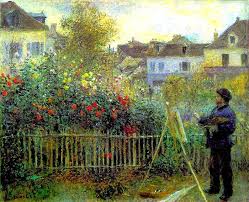Menu

Impressionist painting emerged in late 19th-century France as a radical departure from academic art. Instead of precise detail, Impressionists aimed to capture the fleeting effects of light and atmosphere. Artists like Claude Monet, Pierre-Auguste Renoir, and Edgar Degas used visible, broken brushstrokes and bright, often unmixed colors to convey vibrancy and movement.
Their subjects were often everyday life—gardens, cafes, rivers, bustling streets—seen at different times of day. Monet’s series of haystacks or water lilies shows how changing light transforms color and mood. Rather than painting in studios, many worked “en plein air” (outdoors), emphasizing direct observation of nature.
Critics initially dismissed these works as unfinished “impressions,” but the style ultimately revolutionized art. Impressionism paved the way for modern movements by showing that art could capture experience and perception, not just objective reality. Today, its shimmering colors and lively brushwork remain beloved around the world, offering viewers a sense of immediacy and wonder at the beauty in ordinary moments.



@THE INDIAN ART COTTAGE
© The Indian Art Cottage | All Rights Reserved | 2025